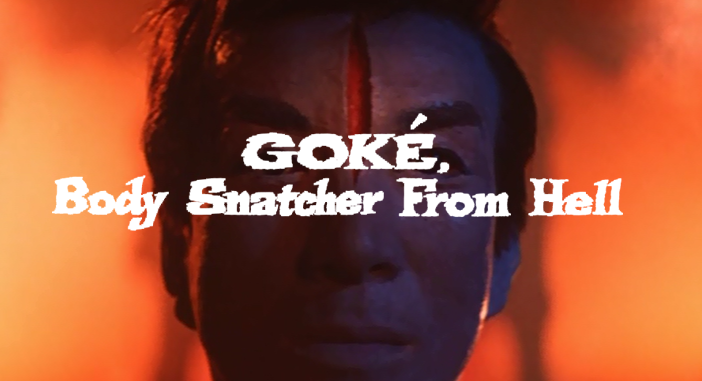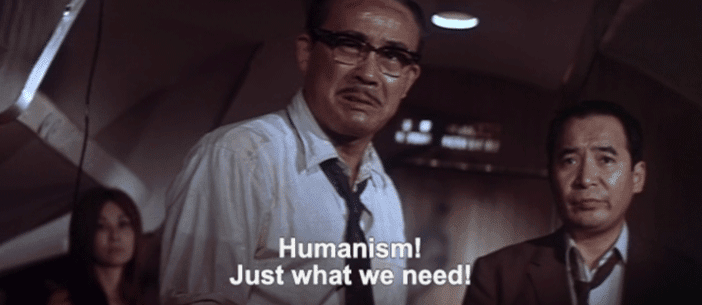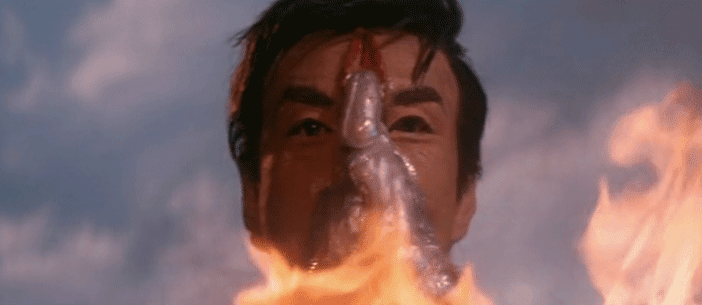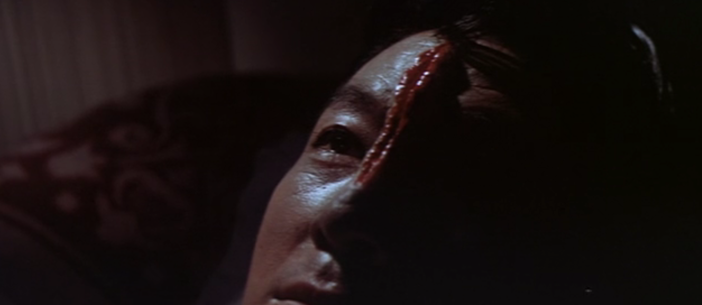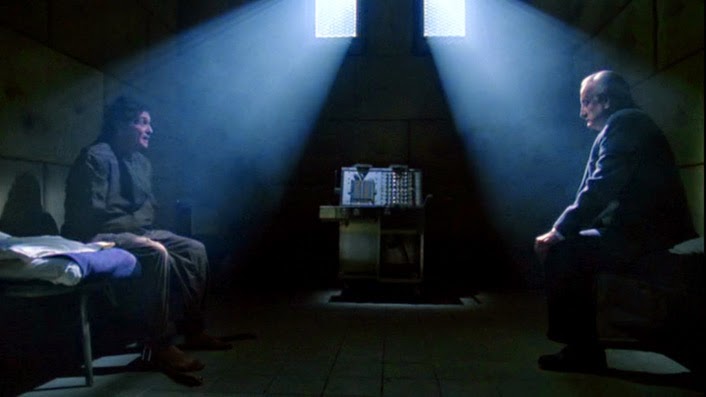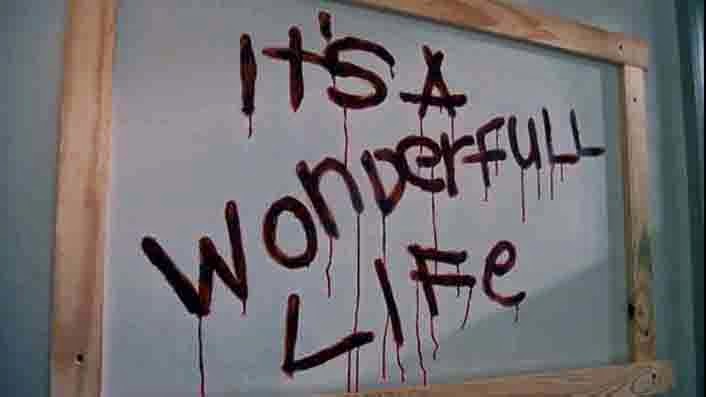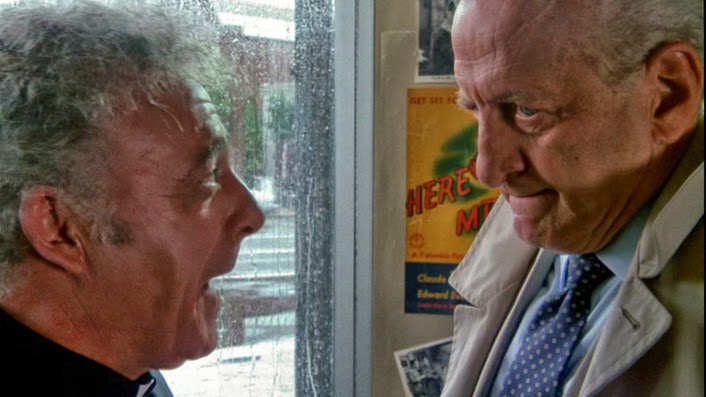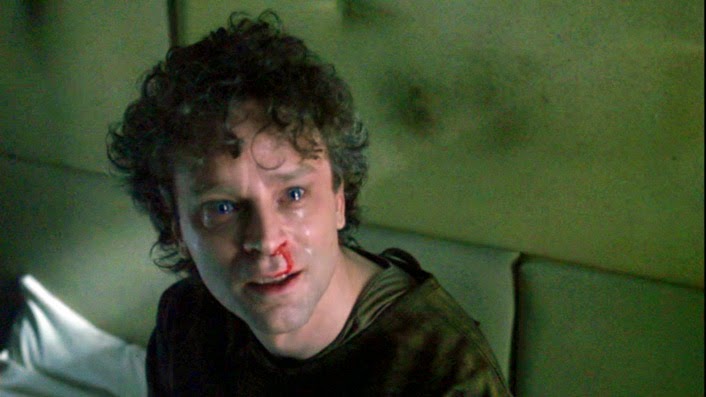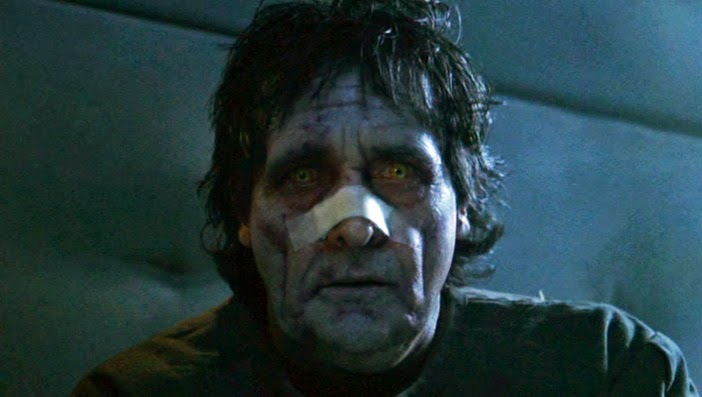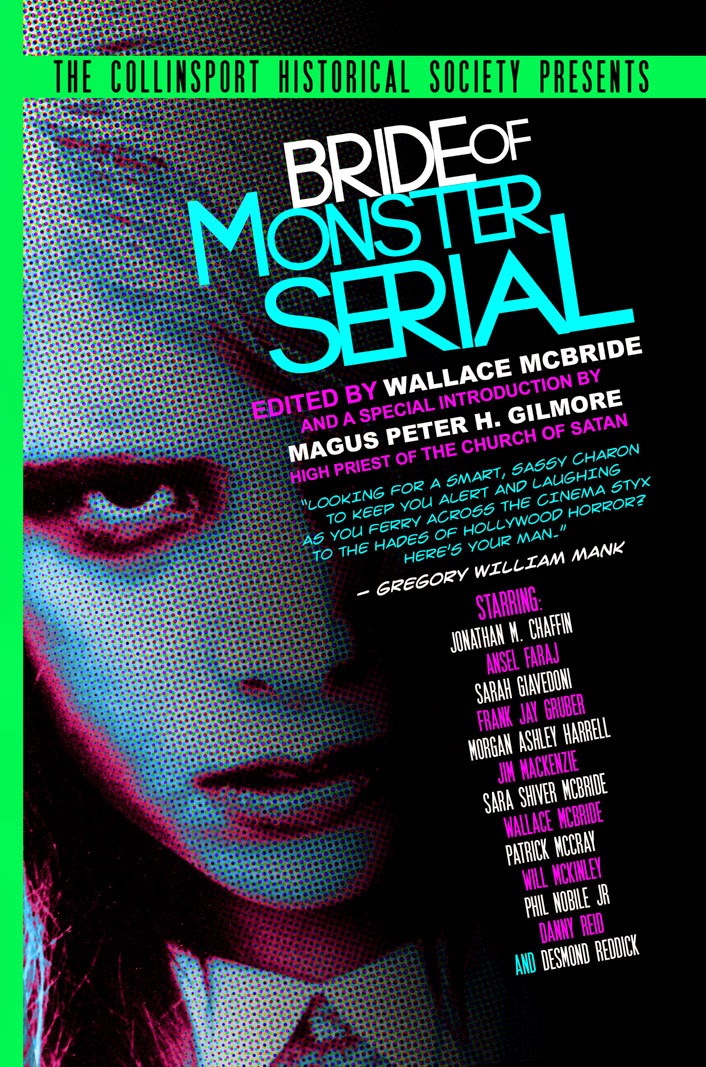By DESMOND REDDICK
I’m not trying to sound like a hipster. Yes, I’m aware that I was asked to write about a vampire movie. And I’m also aware that my film choice is only a vampire story in the flimsiest sense. I will make a somewhat heroic effort to convince you that it is a vampire movie a little later on.
I’m also not going to be a hipster by claiming to have been into this film before it was cool. I’ve only been aware of it for a few months other than seeing one screen shot in a magazine or book I was too young to be reading as a child.
This film is actually impossible to consider in those terms. It has, in fact, always been cool. It is so cool that it was cool before it existed. It defies the laws of time and space that way. I’m sure that 80,000 or 90,000 years ago, when a caveman was hunting a wooly mammoth, he was thinking that he would rather be watching this movie that, at that point, was only floating around in Jung’s Collective Unconsciousness.
I am aware of the paradox. It’s mysteries like these that keep me up at night.
The films that seem to surprise us the most are the weird flukes, films where risks are taken. This is a case of one of those. Shochiku is a mainstay film studio in Japan. Established before the advent of film itself in 1895 as a kabuki theatre company, the studio still exists today and also acts as a distributor for anime films.
The studio made its name producing realist films and became huge during the Japanese New Wave. The production of genre film doesn’t seem to be viewed as “lesser” in Japan like it is in other places around the world, so I’m not sure why they never really dove in during the 1950s like a lot of other studios did in the wake of GODZILLA. When the 1960s came around, however, they made a few genre films, each of them unique in their own way. THE X FROM OUTER SPACE was a bonkers kaiju film; THE LIVING SKELETON was a gothic horror tale; GENOCIDE was an ecological insect apocalypse film.
And then came GOKE, BODY SNATCHER FROM HELL.
There’s something both beautifully bizarre and entirely unremarkable about the story of GOKE, BODY SNATCHER FROM HELL. At the same time it’s an exercise in fringe science fiction, it’s also a story that, with a few tweaks here and there, could be found in an episode of “The Twilight Zone.”
The film begins on a commercial flight soaring through a sky so red it is referred to as a “sea of blood” by the pilot. On the flight is an astonishingly representative assortment of characters: a politician, a sycophantic arms dealer, his cuckolding wife, a radical student, a space biologist, a grieving American widow on her way to collect the body of her husband, a political assassin and a behavioural psychiatrist. The cast is rounded out by the crew which is quickly whittled down to co-pilot and stewardess after a bomb threat, a hijacking, suicidal crows and a UFO force the plane to crash in an unknown area. Yes, all of those things.
Tensions run high even before a character boards a landed UFO and meets a parasitic alien blob that turns him into a space vampire! See! I told you there was a vampire.
The rest of the film combines the story elements of the television show “Lost” and John Carpenter’s THE THING. Stranded in an area of the world alien to them, the survivors of the crash must come to terms with an enemy that hunts them while having the ability to inhabit their bodies.
While this story could be viewed as somewhat ahead of its time in its original release, it is hardly rare in the sense of genre. There are many examples of this kind of story in sci-fi/horror films. It’s not unique.
What does set the film apart is the style in which it is presented. The story elements of THE THING, one of my all-time favorite films, are combined with the tone and aesthetic quality of another one of my time favorites, Lucio Fulci’s THE BEYOND.
The desolation and “Ten little Indians”-style thriller set-up combined with some vivid gore effects and vibrantly garish color makes for a truly unique and powerful cinematic experience. This bizarre melting pot comes together to create a nihilistic masterpiece. There is a sense of hopelessness pervading almost the entire film. Shortly after the crash, a scuffle onboard the plane leads to a radio falling and accidentally being turned on to announce the news that the the search party had been called off. Mind you, this is the SAME DAY as the crash. I guess people in the days before the 24 hour news cycle didn’t really give a shit about lost planes.
Regardless of the nihilism, the film still keeps a bouncy pace and a vibrant tone in the midst of all the horrific shit the characters are going through. I love a good nihilistic film, but sometimes the darkness gets to be too much. Not here. Things are bleak enough to make you wonder if anybody is going to survive the film, but not so bleak that the movie isn’t fun. Which is not to say that GOKE, BODY SNATCHER FROM HELL is a perfect film.
As mentioned earlier, the story is simple, not bothering with nuance or subtlety. This extends, of course, to character, and, as a result, dialogue. Now, I’ll get to the worst delivery of dialogue in the film in a little while, but the most important examples come from the psychiatrist. For example, after terrifying every passenger on the plane by insisting there was a bomb on the plane, he says: “I’m a psychiatrist, my friend. I’m fascinated by how people react when pushed to the limit.”
Thanks, pal! Nothing like shouting “Fire!” in a theatre for shits and giggles. Never mind the fact that the co-pilot was looking for a bomb at the time, but the manipulative jerk couldn’t have possibly known that at the time anyway.
A little later, after the plane crash, the psychiatrist even pushes the ham-fisted themes further when he says:
“No food, no water, nowhere to run. At such times the survival instinct allows the ego to run wild.
Then we’re no longer human. We become beasts!”
What an asshole!
However bad it is, the dialogue serves the function, seemingly, only to further narrate the nihilistic essay of the filmmaker. A party-pooper might call it pretentious. That’s only because they aren’t paying attention.
The absurdity of the dialogue is so overt that, in my mind, it cannot possibly be an example of losing something in translation. Sometimes in foreign film, two characters will be sitting in a restaurant having a profound conversation and the next line takes seventeen seconds of screen-time to deliver when the subtitles simply say “pass the horseradish.” Okay, maybe that’s an exaggeration, but it’s a sad fact of translation. However, there is honestly little here that I believe was muddled in the subtitling process. I don’t get the feeling that this is a film about character. This is a film about existential crises and how we deal with them. The psychiatrist acts as the Greek chorus, or the filmmaker himself. Remember how I said there isn’t a lot of subtlety?
The only dialogue that could be considered dubious is the American widow. Now, Kathy Horan doesn’t come across as the greatest of actresses - perhaps why she ended up in Japan instead of Hollywood or Broadway - but even she cannot be blamed for her horrendous dialogue. I mean, it was obviously written by someone with very little grasp of the English language. For example, Horan’s Mrs. Neal has her acting moment when war is brought up. As the newly widowed wife of an American soldier in Vietnam, one would think that she might have something profound to say about war. Her response? “I hate war! During war everyone is miserable!” Nope.
I’m sure the Japanese subtitles laid over her words are profound. In fact, when the co-pilot explains another line of dialogue she mentions to other Japanese survivors, it is far more descriptive and heavier on prose. I’m just happy that her character was somehow able to fluently understand Japanese so that none of the other characters have to waste time explaining things to her in broken English. There’s no room for shenanigans like that when you’re running from a dude with a vagina on his forehead.
Talk about burying the lead, right?
The special effects in this film are plentiful and varied. From bloody, twitching bird puppets smashed against windows; to a plane crash done in miniature; to a lo-fi, almost Kubrickian psychedelic light show aboard a UFO. The visuals in this film just keep amping up.
But the pièce de résistance has to be the aforementioned forehead vagina. Explaining the method of “body snatching” won’t spoil the film simply because it has to be seen to be believed. I am certain that I have never seen anything in a 1960s film so obscene as an amorphous blob telekinetically splitting open a gash in a man’s forehead and oozing slowly into it. Later, it oozes out too. It is impossible not to think of less innocent activities than alien possession. Or maybe I just have a filthy mind. I guess you can place gonzo porn on the list of cinema influenced by this film.
 |
| This essay is one of dozens featured in our new book, "Taste the Blood of Monster Serial." |
From the moment I first saw this film only a few months ago, it quickly shot up into my all-time favorite film list, and having watched it three times since, I can say with absolute confidence that the shine has not come off in the slightest.
Whether you’ve always wanted your vampires to come complete with a gynaecological nightmare on their face or not, there are fewer films that come more highly recommended to fans of weird cult cinema.
You don’t have to be a hipster to enjoy it. You may, however, need to be a film snob with disposable income as — as far as I can tell — it is only available in a box set with the three other Shochiku horror/sci fi films mentioned earlier from Criterion. It is definitely worth it.
DESMOND REDDICK is a writer, teacher, podcaster and horror fan who lives on Vancouver Island with his tolerant wife, two savage sons, four vicious chickens and one neurotic female duck named Howard. Check out his podcast at www.dreadmedia.com where he offers his unsolicited opinion on all kinds of different genre movies weekly. Send more whiskey!

